

Andrew Maclean
Honda CR-V RS e:HEV vs Toyota RAV4 Edge Hybrid: Spec battle
5 Days Ago
What does the future of luxury cars look like? It could look a bit like this, with lots of space and minimalistic style.

Design Contributor


Design Contributor
Alexis Poncelet is a recent transportation design graduate from the ISD Rubika in France. He did his master thesis project at Volkswagen Future Centre Europe, where he now works as an exterior designer.
The Monument is a design study exploring the future of the large premium sedan segment. It portrays a hypothetical British limousine offering unconventional proportions, prestigious design and a luxurious cabin.
Alexis believes the decorative design elements and complex patterns found in today’s premium vehicles will gradually disappear, giving their place to simple and elegant forms communicating the essence of the vehicle.
His view of luxury is large body panels, minimum shut lines and massive greenhouse in a well-manufactured product that looks like a jewel.
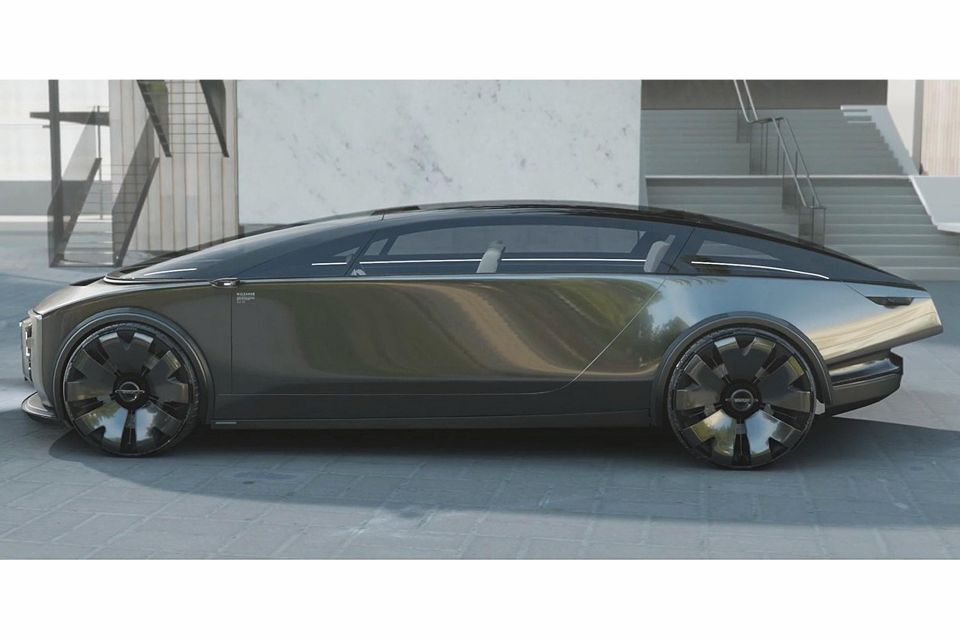
One of the main features of the Monument are its proportions, exploring the transition from the typical three-box silhouette of the limousines of today towards the autonomous shuttle of the future.
The overall shape is characterised by a single curved line running from the front to the rear. The huge greenhouse showcases the roomy and luxurious cabin, bringing lightness to the design.
The large diameter wheels emphasised by the fender add-ons, long wheelbase, and high waistline create an imposing road presence. At the same time, the long rear overhang is a typical feature of luxury cars, contrasting the almost nonexistent front overhang and short bonnet.
There is a single door on each side of the car, covering most of the bodywork on the profile, and opening upwards with a portion of the roof, allowing for easy ingress/egress.

A strong rectangular shape framed by an aluminum stripe defines the front of the car, which sits upright with a high bonnet. The massive grille is mostly covered, with a dot pattern distinguishing it from the rest of the bodywork.
Thin LED headlights are housed in vertical lines dividing the grille and emphasising its height.
At the top there is an elongated air intake, with two more at the bottom where we can also see sensors for the autonomous driving systems on both sides of the licence plate.
The short, flat bonnet houses an inlet following the curves of the massive and heavy inclined front windshield. This horizontal waistline goes all around the car with a slight drop towards the rear.
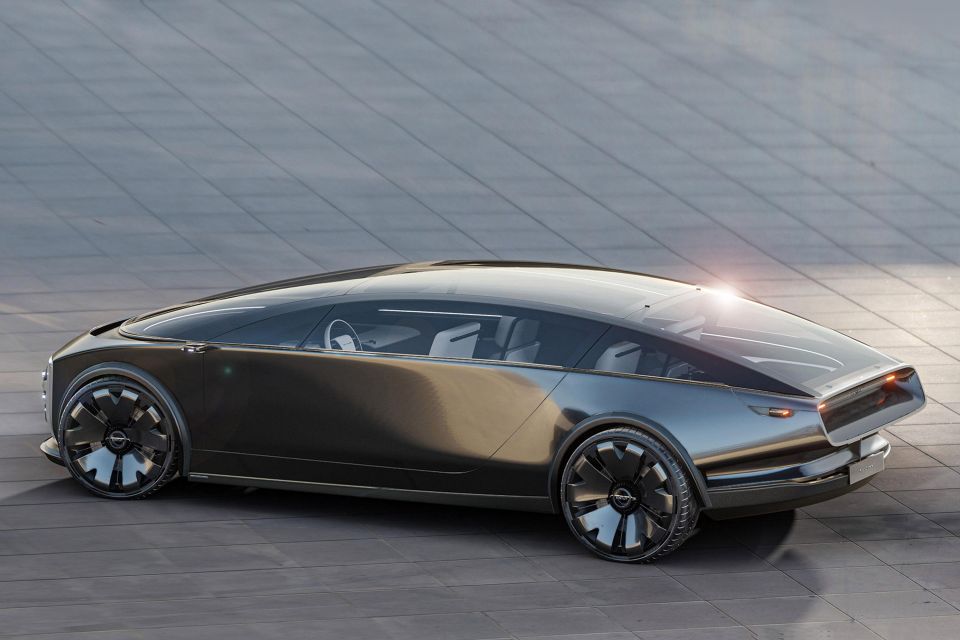
At the back, the swooping roofline meets the dropping character line in the long rear overhang. A flat cutout with a heavy recess gives a three-dimensional sci-fi look, housing the horizontally arranged LED taillights and the illuminated emblem.
There are also additional aircraft-inspired indicators protruding from the sides.
The rear bumper follows the bi-tone theme of the front splitter/side sills/fender add-ons made popular by SUVs. It sits behind the tail and has a curved shape contrasting the angular profile of the rear cutout.
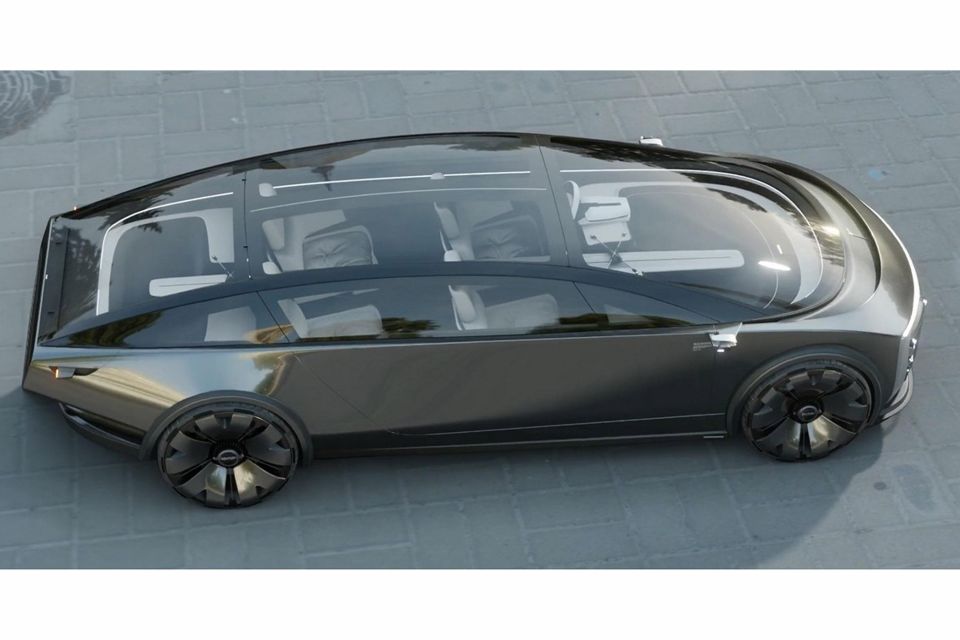
The designer didn’t provide renderings of the interior but the panoramic glass dome gives us a clear view of the cabin.
As a proper limousine, the Monument has room for four adults, in independent seats designed for comfort and style. There is plenty of knee room for the rear passengers and comfortable pillows on the base of each seat, while their backs are visually connected with the side interior panels.
There are no visible screens so our guess is that the user communicates with the artificial intelligence through voice commands, gestures and holograms.
Due to the fully electric architecture and the wedge shape of the car, there is loads of unused space behind the minimal dashboard characterised by curved wooden surfaces.
A long central tunnel looks like it’s floating between the seats, serving as the spine of the car. At the back there is a beautifully designed tub for luggage.
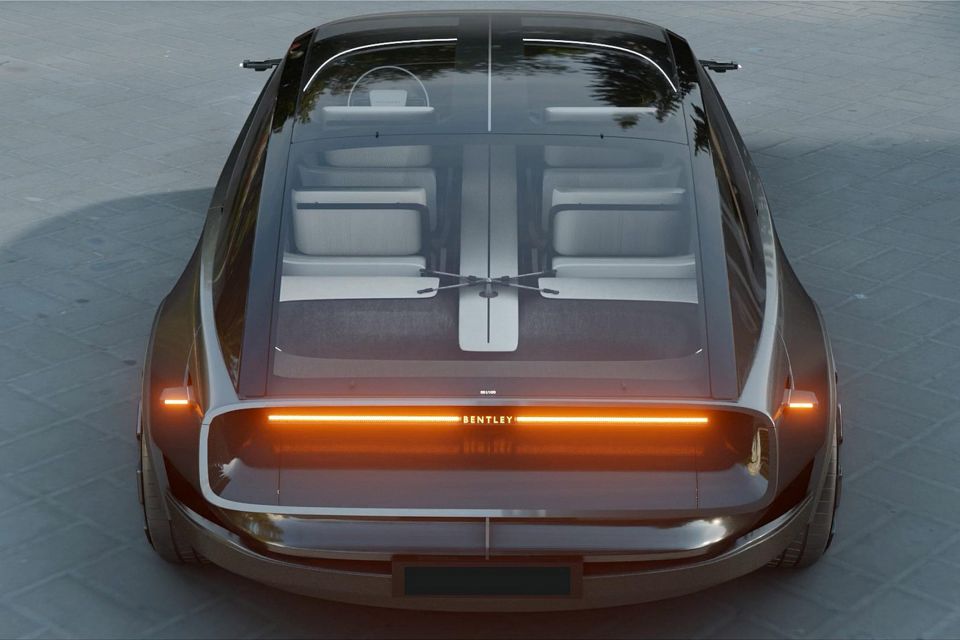
The Monument is a stylish design study envisioning the future of the luxury segment. It does a great job in maintaining the imposing road presence and expensive looking design details of a large premium sedan, without the traditional shape that used to be defined by the architecture of its underpinnings.
Simple volumes, carefully sculpted bodywork, a massive glasshouse, and beautiful lighting for the exterior combine with a luxurious yet minimalist cabin full of organic shapes.
The only problem is the lack of the much-needed privacy because of the glass surfaces surrounding the interior, something that could be easily fixed by the adaptation of electrochromic glass.
For many years, a long bonnet was a necessary feature for limousines, exuding power and opulence. At the same time, having plenty of chrome on the exterior and heaps of gadgets inside was a way for the manufacturers to draw the attention of their target group. However times change, and as we have seen from the brand new Rolls-Royce Ghost (2020), simplicity is the new trend for the ultra luxury class.
The unconventional one-box proportions of the Monument – introduced a few years ago by the futuristic Lagonda Vision Concept (2018) – will soon find their way into production, thanks to the upcoming fully-electric Mercedes-Benz EQS (2021).
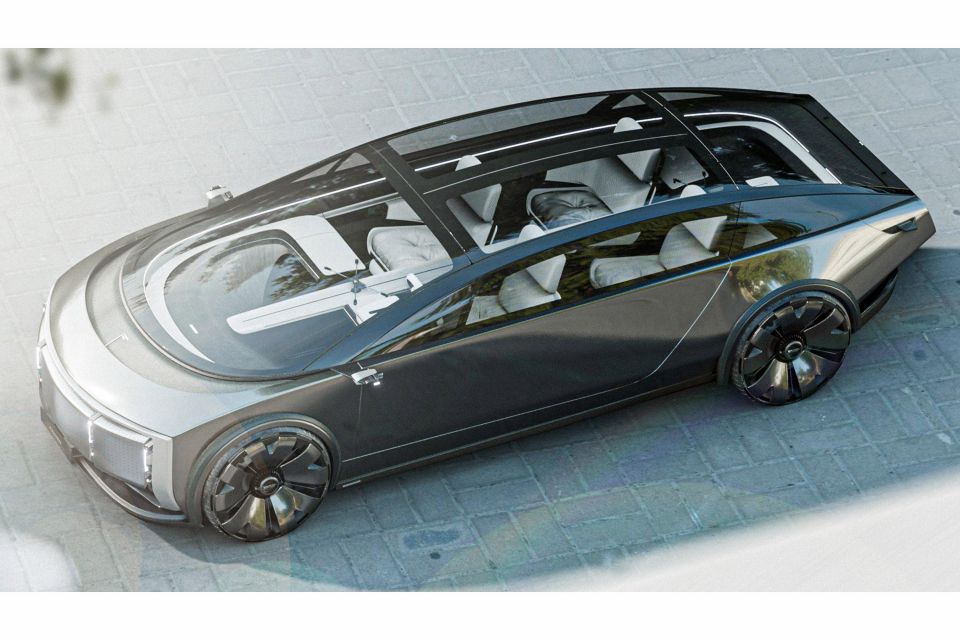
Cars like this will gradually change our perception of how a limousine should look, allowing the designers to create aerodynamically optimised shapes and roomy interiors, emphasising more on user experience which will be the defining factor of car ownership in the near future.
If you liked the Monument, you can follow Alexis Poncelet on Instagramfor more projects like this.


Andrew Maclean
5 Days Ago


Shane O'Donoghue
5 Days Ago


Anthony Crawford
4 Days Ago


Matt Campbell
3 Days Ago


James Wong
2 Days Ago


Max Davies
15 Hours Ago